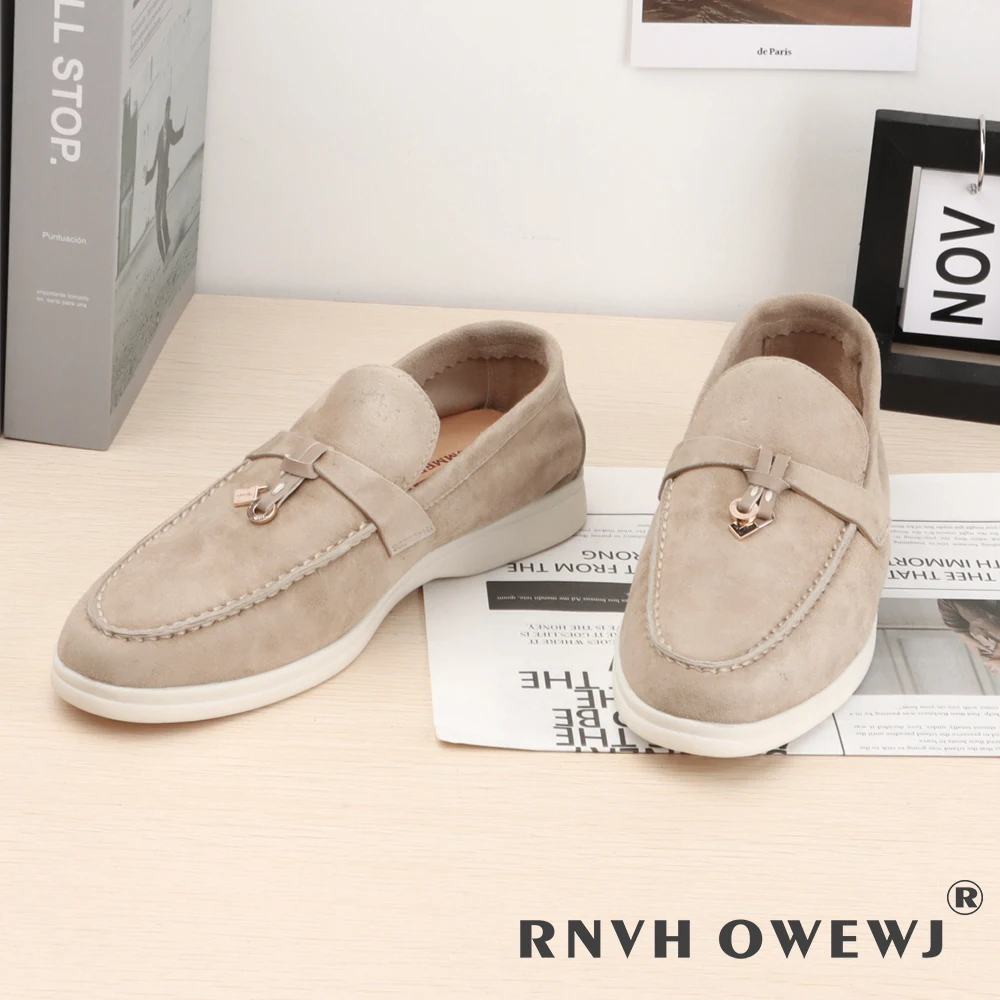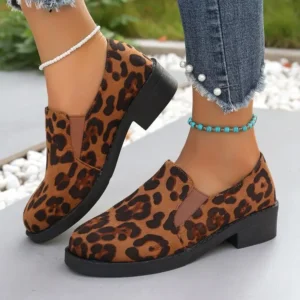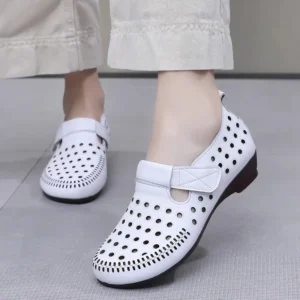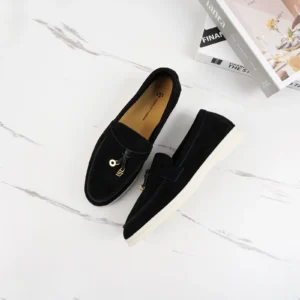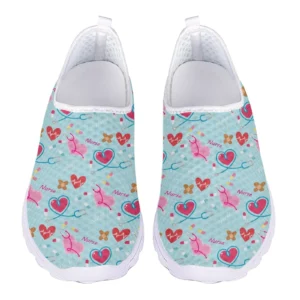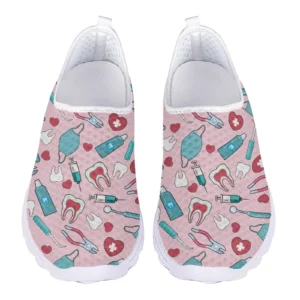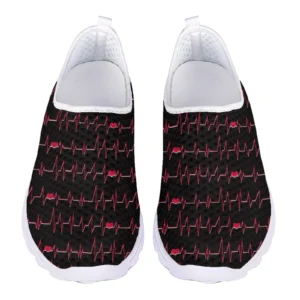Introduction: Finding Loafers That Won’t Let Your Feet Down
We’ve all been there – falling in love with a stylish pair of loafers only to find ourselves wincing in pain after just a few hours of wear. The disconnect between fashion and function has long plagued loafer enthusiasts, forcing many to choose between looking good and feeling comfortable.
But what if you didn’t have to make that choice? What if the perfect loafer – one that combines timeless style with exceptional support for all-day walking – actually exists?
Traditional loafers often fall short when it comes to extended wear. With their characteristically flat soles, minimal cushioning, and rigid construction, they weren’t originally designed with all-day comfort in mind. In fact, studies show that nearly 72% of people experience foot discomfort from wearing improper footwear for extended periods.
This guide aims to bridge the gap between fashion and function, helping you discover loafers that provide exceptional support while maintaining the classic aesthetic you love. We’ll explore the essential features that transform ordinary loafers into all-day walking companions, share our top recommendations, and provide expert tips to ensure your feet stay happy from morning till night.
Whether you’re navigating city streets, exploring new destinations, or simply getting through a busy workday, comfortable walking loafers can make all the difference in how you feel at the end of the day.
The Anatomy of Supportive Loafers: Key Features for All-Day Comfort
What separates a regular loafer from one that can truly support all-day walking? The answer lies in thoughtful design elements specifically engineered to reduce fatigue and prevent pain. Let’s break down the essential components that make a loafer truly supportive:
Contoured Arch Support
Unlike traditional flat loafers, supportive versions incorporate anatomically-designed arch support that follows the natural curve of your foot. This crucial feature helps distribute pressure evenly, preventing the arch from collapsing during extended periods of walking. Proper arch support maintains proper alignment from your feet all the way up through your ankles, knees, and hips.
Premium Cushioning
The best loafers for all-day wear feature multiple layers of cushioning, typically including:
– Memory foam that contours to your unique foot shape
– EVA (ethylene vinyl acetate) midsoles that provide lightweight, responsive cushioning
– Gel inserts strategically placed at high-pressure points
– Padded collars and tongues that prevent friction and rubbing
Shock Absorption
Walking generates impact forces of up to 1.5 times your body weight with each step. Supportive loafers incorporate shock-absorbing materials in the heel and forefoot areas to minimize this impact, reducing fatigue in your feet, ankles, knees, and lower back.
Flexible Yet Supportive Soles
The best walking loafers strike a perfect balance between flexibility and structure. The sole should bend naturally at the ball of the foot (just as your foot does when walking) while remaining supportive enough to provide stability. This combination allows for natural movement while preventing the foot from working too hard.
Breathable Materials
Heat and moisture buildup quickly lead to discomfort, blisters, and foot odor. Truly supportive loafers utilize breathable materials in both the upper and lining to allow air circulation, keeping feet cool and dry throughout the day.
Proper Toe Box Width
A too-narrow toe box forces toes together, causing pressure points, discomfort, and potential long-term issues like bunions. Supportive loafers provide adequate width to allow toes to spread naturally when walking, improving balance and reducing pressure.
When these features work in harmony, they create a loafer that can genuinely support all-day walking while finding comfort and foot support in flat loafers becomes achievable.
What to Look For: Material Matters in Comfort-Focused Loafers
The materials used in loafer construction significantly impact their comfort, support, and longevity. Understanding what to look for can help you make smarter choices when investing in footwear designed for all-day wear.
Upper Materials
- Premium Leather: Quality leather offers several benefits for supportive loafers:
- Gradually molds to your foot shape for a custom fit
- Provides natural breathability to regulate temperature
- Offers durability while becoming more comfortable over time
Strikes the perfect balance between structure and flexibility
Soft Suede: This versatile material works well for supportive loafers because:
- Its natural flexibility allows for freedom of movement
- It’s typically lighter weight than full-grain leather
- It conforms nicely to foot contours
It provides a sophisticated look that pairs with many outfits
Performance Textiles: Modern loafers often incorporate technical fabrics that:
- Offer strategic stretch in key areas for comfort
- Enhance breathability and moisture-wicking properties
- Reduce overall shoe weight for less fatigue
Provide washability and easy maintenance
Knit Uppers: These innovative materials:
- Adapt seamlessly to different foot shapes
- Eliminate pressure points through their flexible construction
- Allow maximum airflow for temperature regulation
- Offer lightweight comfort ideal for travel
Understanding the loafer material comparison guide can help you select the best option for your specific needs and preferences.
Insole Materials
Memory Foam: Contours to your unique foot shape, providing personalized cushioning and reducing pressure points. Memory foam insoles feel plush initially and gradually adapt to your feet over time.
EVA Foam: Delivers lightweight, responsive cushioning that bounces back step after step. It’s particularly effective at absorbing impact without adding bulk or weight.
Cork: A natural material that molds to your foot’s shape over time, providing customized support. Cork also has natural temperature regulation properties.
Gel Inserts: Offer targeted pressure relief and superior shock absorption, particularly beneficial in the heel and ball of the foot areas where impact forces are greatest.
Outsole Materials
Rubber: Provides excellent traction and durability while absorbing shock efficiently. The best supportive loafers use rubber compounds that balance grip, flexibility, and weight.
Polyurethane: Lighter than rubber while maintaining good flexibility and durability. It’s often used in loafers designed for extensive walking due to its excellent shock absorption.
TPR (Thermoplastic Rubber): Combines the best qualities of plastic and rubber, offering durability with good flexibility and a lighter weight than traditional rubber.
For all-day comfort, many women prefer women’s leather flat loafers that combine premium materials with supportive design elements.
Top Picks: Loafers That Excel in Support and All-Day Wearability
After careful evaluation, we’ve identified loafers that truly deliver on the promise of all-day comfort without sacrificing style. Each of these options incorporates the supportive features and quality materials discussed above, ensuring your feet stay comfortable no matter how long your day runs.
Best Overall for Support and Style
These standout loafers combine premium materials with thoughtful design features that address the needs of people who spend hours on their feet:
- Anatomically designed footbeds that cradle the arch
- Memory foam cushioning with targeted support zones
- Shock-absorbing outsoles that reduce impact
- Breathable linings to manage moisture
- Flexible construction that moves naturally with your foot
- Premium leather uppers that mold to your feet over time
These loafers typically range from $110-$180, representing an investment in both style and comfort that pays dividends in the form of pain-free days.
Best for Specific Foot Conditions
For those with particular foot concerns, these specialized loafers provide targeted support:
- Deep heel cups that stabilize the foot and provide extra cushioning (ideal for plantar fasciitis)
- Enhanced arch support for high arches
- Wider toe boxes to accommodate bunions or hammer toes
- Removable insoles that allow for custom orthotics
- Extra depth to accommodate specialized inserts
These therapeutic-focused styles deliver medical-grade support while maintaining a professional appearance, typically priced between $130-$200.
Best Lightweight Options for Travel
When you’re exploring new destinations, these travel-friendly loafers won’t weigh you down:
- Ultra-light EVA midsoles that reduce fatigue
- Flexible knit uppers that pack flat in luggage
- Resilient cushioning that bounces back step after step
- Quick-drying materials that handle unexpected weather
- Versatile styling that pairs with multiple outfits
These travel companions typically range from $90-$150 and are worth every penny for the comfort they provide on long days of exploration.
Best Dressy Options That Don’t Sacrifice Comfort
For professional environments or special occasions, these dressy loafers prove you don’t have to suffer for style:
- Discreet comfort technologies hidden within sleek designs
- Premium materials that flex and breathe while looking polished
- Streamlined cushioning systems that don’t create bulk
- Sophisticated finishes and hardware details
- Low, stable heels that provide height without compromising stability
These office-ready options typically range from $120-$190 and will keep you comfortable from morning meetings through evening events.
For additional options and detailed reviews, explore our collection of most comfortable loafers for walking all day or browse our selection of women’s comfortable flat loafers.
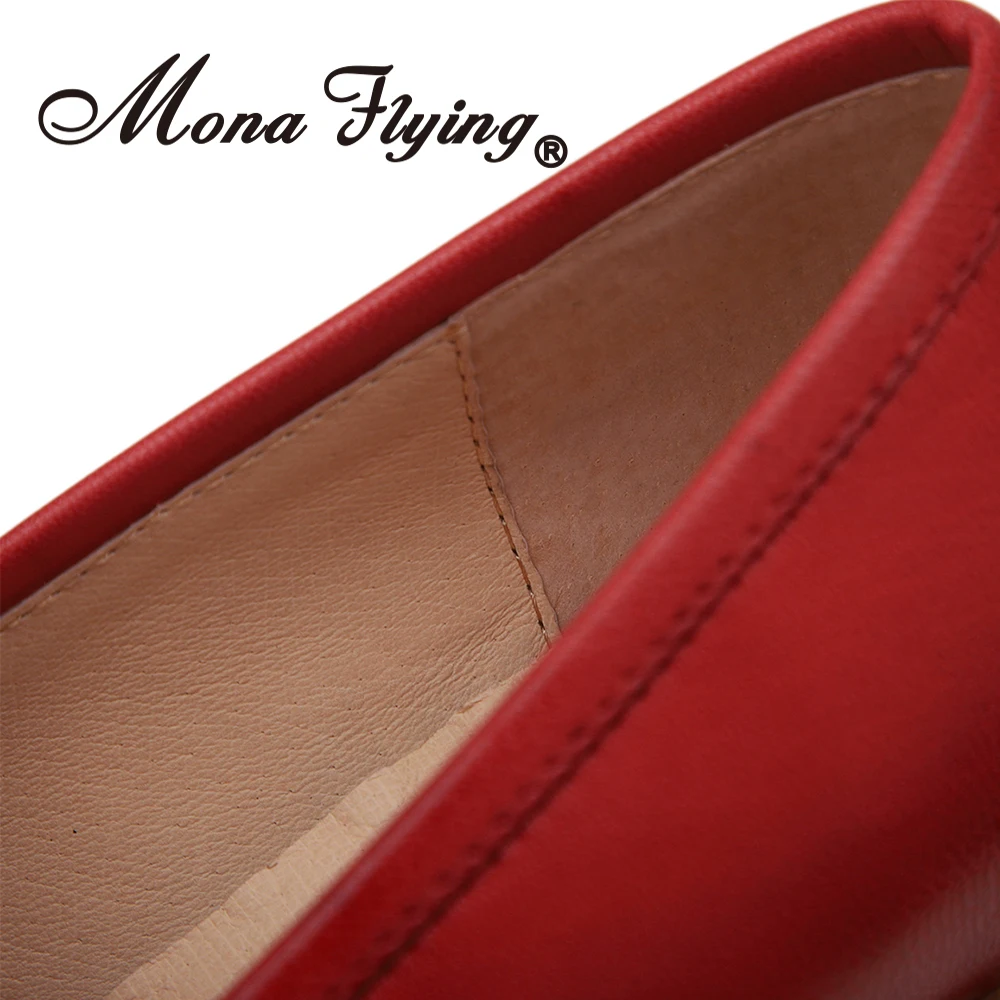
The Perfect Fit: Ensuring Your Supportive Loafers Work for Your Feet
Even the most well-designed loafer can’t provide proper support if it doesn’t fit correctly. Follow these guidelines to ensure you find your perfect match:
When to Shop
Shop for shoes in the afternoon or evening when your feet have naturally expanded. Feet can swell up to half a size throughout the day, so trying on loafers when your feet are at their largest ensures they’ll be comfortable all day long.
Measuring for Accuracy
- Trace your foot on a piece of paper while standing (weight-bearing)
- Measure the length from heel to longest toe
- Measure the width at the widest part of your foot
- Compare these measurements to the brand’s size chart
- Remember that sizes vary between manufacturers
Testing the Fit
When trying on loafers, conduct these simple tests:
- Thumb width test: Ensure there’s about a thumb’s width of space between your longest toe and the front of the loafer
- Width check: Your foot should not spill over the sides of the footbed
- Arch alignment: The arch support in the loafer should match the position of your natural arch
- Heel security: Your heel should sit securely without slipping when you walk
- Movement test: Walk around to check that the loafers flex where your foot naturally bends
Addressing Common Loafer Fit Issues
- Heel slippage: Often an issue with loafers, this can be addressed with heel grips or choosing a style with a more secure upper design
- Width challenges: Look for brands that offer multiple width options or styles with adjustable features
- Volume discrepancy: If you have a high instep, look for loafers with higher vamps or slight stretch in the upper material
The right fit is fundamental to comfort, and choosing ideal walking loafers starts with understanding your unique foot shape and needs.
Adapting to Your Needs: Loafers for Specific Foot Concerns
Different foot types and conditions require specialized features to ensure all-day comfort. Here’s how to find loafers that address your specific needs:
For High Arches
If you have high arches, your feet may lack natural shock absorption. Look for loafers with:
* Extra cushioning throughout, especially in the midfoot
* Flexible uppers that don’t put pressure on the top of the foot
* Deep heel cups that help stabilize the foot
* Removable insoles to accommodate custom orthotics if needed
For Flat Feet
Flat feet benefit from loafers that provide structure and support:
* Firm arch support to prevent overpronation
* Structured heel counters for added stability
* Motion control features that limit excessive movement
* Durable midsoles that won’t compress too quickly
For Wide Feet
Wide feet need room to spread naturally when walking:
* Wide or extra-wide sizing options
* Styles with roomy toe boxes
* Adjustable features like laces or stretch panels
* Soft, forgiving upper materials that provide give
For Bunions or Hammer Toes
These conditions require accommodation for bony protrusions:
* Soft, flexible uppers that won’t create pressure points
* Extra depth in the toe box
* Seamless construction to prevent rubbing
* Stretchy materials in key areas to accommodate irregularities
For Plantar Fasciitis
This painful condition requires targeted support:
* Substantial arch support to relieve tension on the plantar fascia
* Deep heel cushioning to absorb impact
* Firm midsoles that limit excessive foot movement
* Slight heel elevation to reduce strain
For added comfort in loafers with a bit of height, many with foot concerns find wedge loafers with arch support provide excellent stability while looking stylish. Additionally, women’s round toe flat loafers often provide more room in the toe box for those needing extra space.
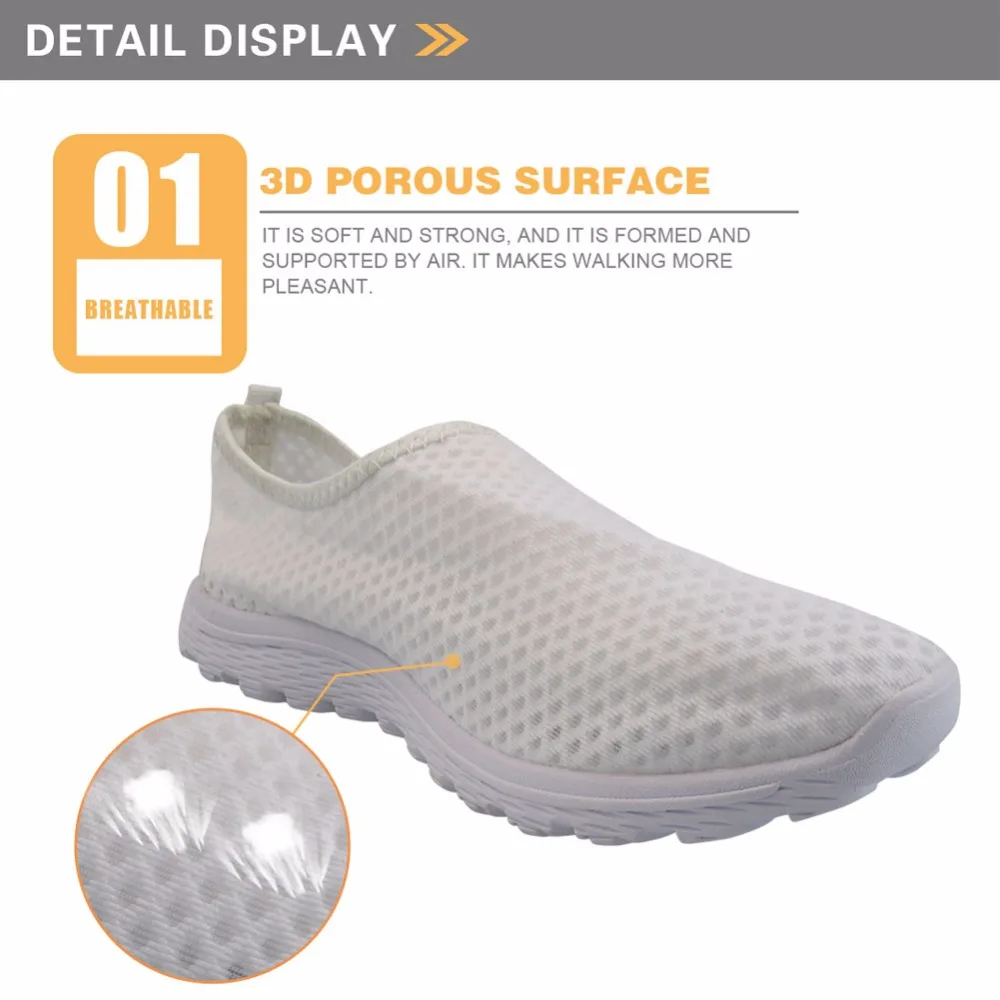
Breaking In Without Breaking Down: Getting Comfortable in New Loafers
There’s a difference between the normal adjustment period for new shoes and genuine fit problems. Here’s how to navigate the break-in process successfully:
Start slow: Wear your new loafers for just 1-2 hours the first day, gradually increasing duration over a week.
Use targeted stretching: For tight spots, try wearing thick socks with your loafers and applying gentle heat from a hairdryer to help the material expand slightly where needed.
Protect potential hotspots: Apply moleskin or cushioning bandages to areas where you feel rubbing before blisters form.
Use leather conditioner: For leather loafers, applying a quality conditioner helps soften the material and speed up the molding process.
Consider shoe trees: Using cedar shoe trees between wears helps maintain the shape while absorbing moisture.
Remember that truly supportive, well-designed loafers should require minimal breaking in. While some molding to your foot shape is normal, significant discomfort suggests a fit issue.
Warning signs that your loafers might not be right for you despite break-in efforts include:
* Persistent pain rather than mild discomfort
* Blisters that continue to form in the same spots
* Numbness or tingling in any part of your foot
* Pain that extends to your knees, hips, or back
For more specific advice on preventing discomfort, explore our guide on how to wear loafers without hurting your feet.
Expert Care: Maintaining Support and Extending Loafer Lifespan
Proper care not only keeps your loafers looking great but also preserves their supportive features, extending their usable life.
Leather Care
- Clean regularly with a soft cloth to remove dirt and dust
- Apply leather conditioner every 4-6 weeks to prevent drying and cracking
- Use shoe trees to maintain shape and absorb moisture between wears
- Protect with a quality waterproofing spray, especially for lighter colors
- Allow 24 hours of rest between wears to preserve cushioning and support
Suede Care
- Brush gently with a suede brush after each wear to restore nap
- Use a specialized suede protector before first wear and quarterly thereafter
- Address stains immediately with a suede eraser
- Keep away from water; use specialized suede waterproofing products
- Stuff with tissue paper when storing to maintain shape
Textile/Knit Care
- Spot clean with mild soap and water as needed
- Air dry completely away from direct heat
- Deodorize regularly with baking soda or specialized shoe deodorizers
- Protect with fabric guard spray appropriate for the material
- Hand wash removable insoles periodically to prevent odor buildup
Supportive Components Maintenance
- Inspect insoles regularly for compression and replace when they no longer provide adequate cushioning
- Check outsoles for wear patterns that might affect your gait
- Address any separation between upper and sole immediately
- Replace heel tips at the first sign of wear to maintain proper alignment
Rotating between multiple pairs of supportive loafers can significantly extend their lifespan by giving cushioning materials time to recover between wears.
For everyday comfort with a touch of elegance, consider exploring our collection of women’s low heel loafers.
Women's Comfortable Flat Loafers, Women's Leopard Print Loafers, Women's Low Heel Loafers
$82.50 Select options This product has multiple variants. The options may be chosen on the product pageWomen's Comfortable Flat Loafers, Women's Leather Flat Loafers, Women's Round Toe Flat Loafers
$124.88 Select options This product has multiple variants. The options may be chosen on the product pageWomen's Loafer Mules, Women's Suede Flat Loafers
$190.23 Select options This product has multiple variants. The options may be chosen on the product pageWomen's Classic Driving Loafers, Women's Classic Penny Loafers, Women's Comfortable Flat Loafers
$75.28 Select options This product has multiple variants. The options may be chosen on the product pageWomen's Black Flat Loafers, Women's Classic Penny Loafers, Women's Comfortable Flat Loafers
$75.28 Select options This product has multiple variants. The options may be chosen on the product pageWomen's Classic Penny Loafers, Women's Comfortable Flat Loafers
$92.49 Select options This product has multiple variants. The options may be chosen on the product page
Are Inserts the Answer? When to Enhance Support with Orthotics
When should I consider adding inserts to my loafers?
Even well-designed supportive loafers may benefit from additional inserts if you have specific foot conditions, unusual arch heights, or have been recommended orthotics by a healthcare professional. Consider inserts when you need targeted support beyond what the shoe provides.
Which loafers work best with additional inserts?
Look for styles with:
* Removable insoles that can be replaced with orthotics
* Adequate depth to accommodate added inserts without crowding your foot
* Slightly wider construction to maintain comfort with inserts
* Structured uppers that will maintain their shape with orthotics
What types of inserts work best with loafers?
- 3/4 length orthotics often work better than full-length in loafers as they take up less space in the toe box
- Low-profile heel cups provide stability without changing how the shoe fits
- Thin arch supports offer targeted support without filling the shoe
- Metatarsal pads relieve pressure on the ball of the foot while taking minimal space
When should I consult a professional?
If you have chronic foot pain, diagnosed foot conditions, or significant gait issues, consider seeing a podiatrist for custom orthotics specifically designed for your feet and the types of shoes you wear most often.
For versatile options that often work well with additional inserts, many customers find success with our women’s classic driving loafers.
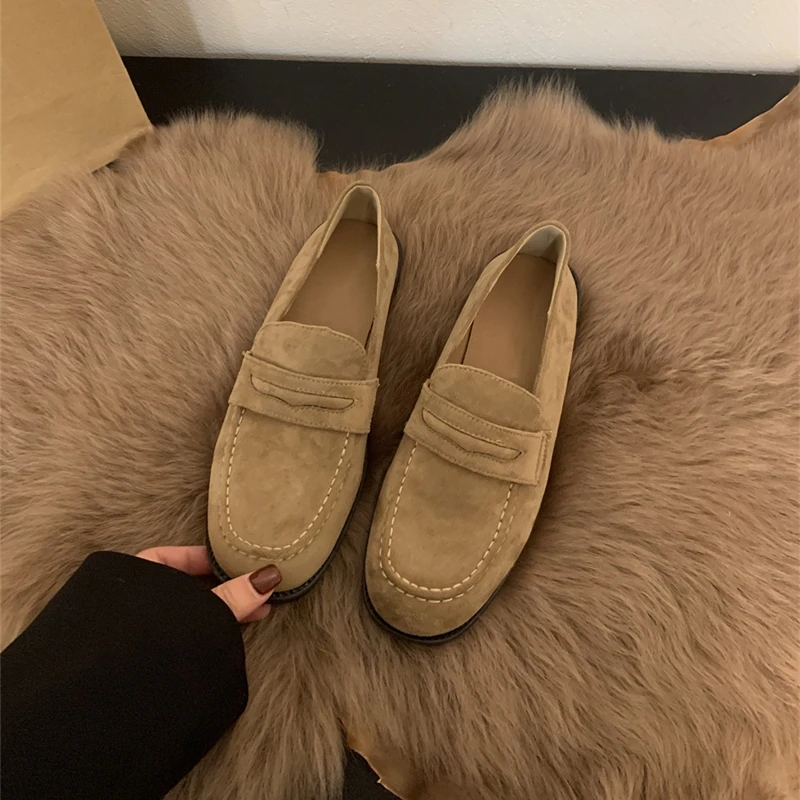
FAQ: Your Questions About Supportive Loafers Answered
Can loafers ever provide support comparable to athletic shoes?
While loafers and athletic shoes serve different purposes, today’s advanced comfort technologies allow quality supportive loafers to provide impressive support. They won’t replace running shoes for a marathon, but well-designed loafers can certainly keep you comfortable throughout a full day of walking or standing.
How long should quality supportive loafers last with regular wear?
With proper care and rotation, premium supportive loafers typically last 2-3 years of regular wear. The supportive elements like cushioning and arch support may compress sooner than the upper materials show wear, so pay attention to how they feel, not just how they look.
Is there a break-in period for supportive loafers?
Quality supportive loafers should require minimal breaking in. You might experience a short adjustment period of 3-5 wears as the materials conform to your feet, but significant discomfort likely indicates a fit issue rather than a normal break-in process.
Are certain brands consistently better for support?
While we can’t name specific brands, look for companies that specifically highlight comfort technologies, offer multiple widths, and have a history in comfort footwear rather than just fashion footwear. Reading customer reviews specifically from people who value comfort can provide valuable insights.
Can loafers with proper support help with specific foot conditions?
Yes, properly designed supportive loafers can help alleviate symptoms associated with common foot conditions like plantar fasciitis, flat feet, and general foot fatigue. For serious foot conditions, however, consult with a podiatrist for professional recommendations.
Are more expensive loafers necessarily more supportive?
Not always. While quality materials and construction often come with higher price tags, some mid-priced loafers incorporate excellent support features. Focus on specific comfort technologies and construction methods rather than price alone.
How can you tell if your loafers have adequate arch support?
When standing, you should feel gentle, even pressure along your arch—not emptiness beneath it or painful pressure against it. The support should follow the natural curve of your foot and feel stable when walking.
For those who prioritize comfort in a classic style, our women’s suede flat loafers collection offers excellent options that combine support with timeless design.
At Artisan Haul, we carefully curate our loafer collections to ensure they meet our strict standards for both style and comfort, so you never have to choose between looking good and feeling good. Our commitment to quality materials, superior construction, and genuine comfort means you can trust that each pair is designed to support your busy lifestyle.

